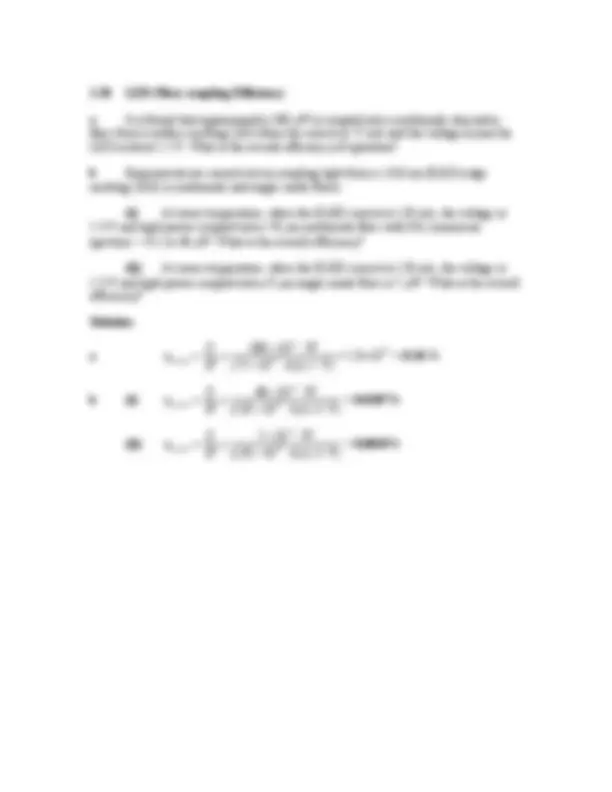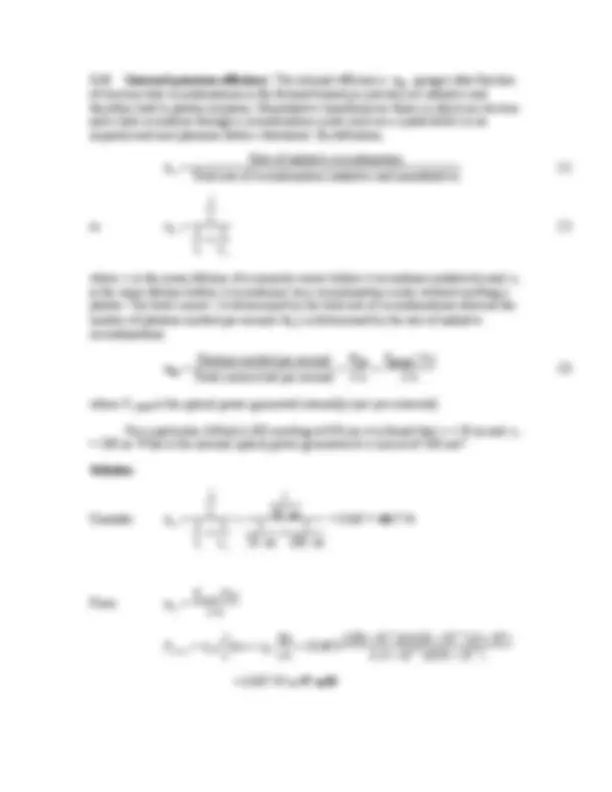




Study with the several resources on Docsity

Earn points by helping other students or get them with a premium plan


Prepare for your exams
Study with the several resources on Docsity

Earn points to download
Earn points by helping other students or get them with a premium plan
Community
Ask the community for help and clear up your study doubts
Discover the best universities in your country according to Docsity users
Free resources
Download our free guides on studying techniques, anxiety management strategies, and thesis advice from Docsity tutors
Solutions to homework problems related to the external and internal conversion efficiencies of light emitting diodes (leds). The problems involve calculating the external conversion efficiency of an algaas red led and the overall efficiency of coupling light from an led into multimode and single mode fibers. Additionally, the internal quantum efficiency of an algaas led is determined using the mean lifetimes of radiative and nonradiative recombinations.
Typology: Assignments
1 / 4

This page cannot be seen from the preview
Don't miss anything!



EEE 165 CSUS Instructor: Russ Tatro
Chapter 3 Semiconductor Science and Light Emitting Diodes S.O. Kasap, Optoelectronics and Photonics, Principles and Practices , 2001
Solutions to Chapter 3 Homework.
Problems 7, 10, 11
7 ηext = 0.03125 = 3.125%
(^10) a) ηoverall = 0.18% b) part (i) ηoverall = 0.0307% and part (ii) ηoverall = 0.0045%
(^11) ηint = 66.7% Poptical(internal) = 97 mW
is defined as
Optical power output Electrical power input
Po IV
One of the major factors reducing the external power efficiency is the loss of photons in extracting the emitted photons which suffer reabsorption in the pn junction materials, absorption outside the semiconductors and various reflections at interfaces.
The total light output power from a particular AlGaAs red LED is 2.5 mW when the current is 50 mA and the voltage is 1.6 V. Calculate its external conversion efficiency.
Solution
Po IV
of electron hole recombinations in the forward biased pn junction are radiative and therefore lead to photon emission. Nonradiative transitions are those in which an electron and a hole recombine through a recombination center such as a crystal defect or an impurity and emit phonons (lattice vibrations). By definition,
Rate of radiative recombination Total rate of recombination (radiative and nonradiative)
is the mean lifetime before it recombines via a recombination center without emitting a photon. The total current I is determined by the total rate of recombinations whereas the number of photons emitted per second (Φ ph ) is determined by the rate of radiative recombinations.
Photons emitted per second Total carriers lost per second
Φ (^) ph I / e
I / e
where Pop (int) is the optical power generated internally (not yet extracted).
= 100 ns. What is the internal optical power generated at a current of 100 mA?
Solution
50 ns 1 50 ns
100 ns
I / e
e
Ihc
= 0.097 W or 97 mW